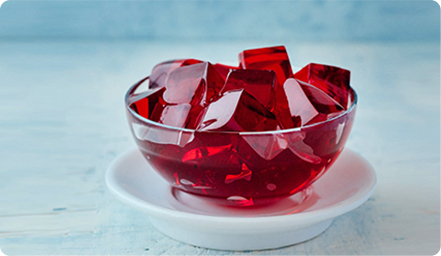-
July, 26,2025
Understanding the Role of Bloom Strength in Soft Gelatin Capsules
-
July, 25,2025
Bloom Strength and Its Impact on Hard Gelatin Capsules
-
July, 21,2025
How Gelatin Is Revolutionizing Pet Food: A Healthier Option for Dogs
-
June, 22,2025
Collagen as a Trusted Ingredient: Meeting Global Demand with Reliable Supply
Gelatin as a Clarification Agent: Enhancing Beverage Quality and Stability
Gelatin is a key clarifier in beverage production, helping remove turbidity and enhance clarity in products like wine, beer, and juice. Its natural properties make it versatile for various beverage applications, improving overall quality and stability.
The Role of Gelatin in Beverage Clarification
Gelatin is commonly used as a clarifier in beverages like beer, fruit wine, and fruit juice. It reacts with tannins and other compounds to form flocculent precipitates, helping to remove turbidity and enhance clarity. For example, the typical gelatin usage is 2-3% in fruit juices, 0.5% in beer, and 0.1-0.3 g/L in wine. Gelatin can also be combined with other substances, such as tannins and silica gel, to improve clarification.
Clarification Process
1. Adding Gelatin: Dissolve gelatin in water (usually 1% of the beverage's weight) and slowly add it to the beverage with continuous stirring.
2. Forming Precipitates: Gelatin reacts with tannins and suspended particles in the beverage to form flocculent precipitates.
3. Sedimentation: Let the beverage stand at 8-12°C for 5-10 hours to allow the precipitates to settle.
4. Filtration: Filter out the settled precipitates to achieve clarification.
5. Combination with Other Clarifiers: Gelatin can be used with tannin, silica gel, or bentonite for enhanced effects.
6. Temperature Control: Proper temperature is crucial; too high slows clarification, while too low may cause turbidity.
7. Final Effect: This process removes turbidity, resulting in a clear and stable beverage without affecting flavor or nutrition.
This method is effective for various beverages, ensuring transparency and improved appearance.
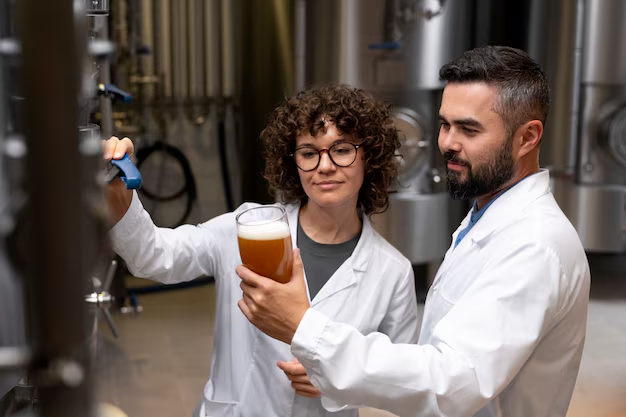
Gelatin Applications in Various Beverages
The application of gelatin in various beverages is diverse. It is mainly used as a clarifier. It reacts with tannins and other substances in beverages to form flocculent precipitation, which helps to remove turbidity in beverages and make the beverages clear. The following are the applications of gelatin in different beverages:
Wine
In wine, gelatin mainly reacts with negatively charged molecules such as phenolic substances and tannins in wine to form larger particles, which are then removed by filtration or precipitation, making the wine clear and transparent. Gelatin is particularly suitable for the clarification of red wine because it can reduce the tannin content in the wine and reduce the astringency while having little effect on the color and flavor of the wine.
During the clarification process of wine, the amount and method of using gelatin need to be carefully controlled to avoid excessive clarification, which may affect the flavor and color of the wine. In actual operation, the amount of gelatin added and the processing temperature have a significant effect on the clarification effect. For example, the clarification temperature of white wine is usually more suitable between 14-16°C, while red wine can be carried out at a lower temperature.
In addition, gelatin can also be added to grape juice before fermentation to remove the roughness and color of the juice and improve the transparency and taste of the wine. However, it should be noted that gelatin is a protein that is soluble in alcohol and has poor thermal stability. If used in excess, protein may remain in the wine, causing turbidity in the wine. Therefore, when using gelatin for clarification, preliminary testing is required to determine the optimal dosage and conditions.
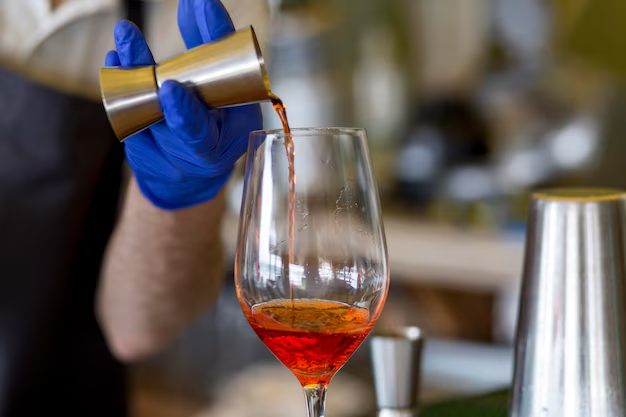
Beer
The application of gelatin in both wine and beer involves its role as a clarifier, but there are some differences in the specific applications of the two.
In beer, gelatin also acts as a clarifier to help remove turbidity in beer and make the beer clear. Gelatin reacts with substances such as tannin in beer to form flocculent precipitation, and then the precipitation is removed by filtration to achieve the purpose of clarifying the beer. In beer clarification, the amount of gelatin added is usually about 0.5% of the weight of the beer. The application of gelatin in beer is mainly to improve the transparency and stability of beer, and has little effect on the flavor and color of beer
The application of gelatin in wine and beer is to clarify the wine, but due to the differences in the ingredients of wine and beer, the conditions and effects of gelatin use will also be different. In beer, the use of gelatin focuses more on improving the transparency and stability of beer.
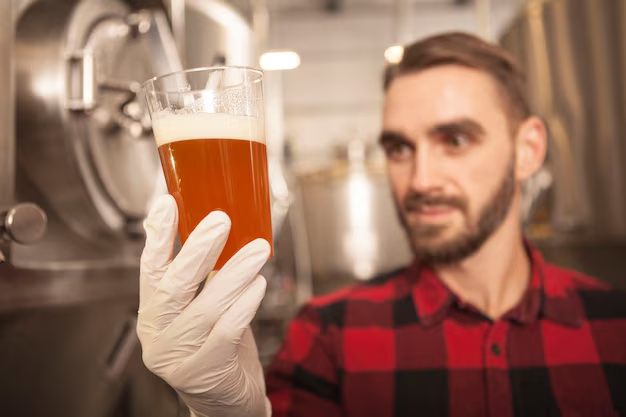
Apple Juice and Other Beverages
Gelatin is very important in apple juice production as a clarifier. It can react with tannins and other negatively charged substances in the juice to form flocculent precipitation, thereby helping to remove turbidity from the juice and make the juice clear. This process is essential to improving the appearance and stability of the juice.
1. Thickener and stabilizer: In beverages, gelatin can be used as a thickener and stabilizer to increase the viscosity of the beverage and improve the taste. It helps prevent the sedimentation of solid particles in the beverage and maintains the uniformity and stability of the beverage. In juice drinks, the amount of gelatin added is usually between 2% and 3%.
2. Improve taste and texture: Gelatin can improve the taste and texture of beverages, making them more delicate and rich. In some beverages, gelatin can be used to simulate the texture of fat and provide a richer taste experience.
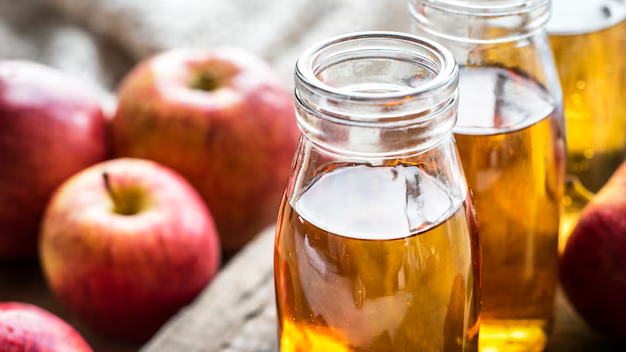
Benefits of Gelatin as a Clarification Agent
Gelatin has significant advantages as a clarifier in beverage production.
Clarification Process
As a natural high molecular weight protein, gelatin has good adsorption properties during the clarification process. The surface of gelatin molecules carries a positive charge, which can interact with impurities such as negatively charged suspended particles and colloids in the solution to form a complex.
The formation of this complex helps to reduce the suspended matter in the solution and significantly improves the transparency of the solution. Since gelatin is an edible natural substance, it is widely used in the food and beverage industry, such as the clarification of wine, juice, and beer, without affecting the flavor and safety of the product.
The main benefit of the clarification process is that gelatin has good biocompatibility and can interact with various impurities in the solution. The flocs formed after adsorbing suspended particles are easy to separate, making the solution clearer and more transparent.

Rapid Flocculation
The molecular structure of gelatin makes it highly reactive in solution, and it can quickly combine with suspended particles, colloids, and other impurities in the solution to form larger flocs. This process is called flocculation.
Rapid flocculation is a major advantage of gelatin as a clarifier, because it quickly distributes and works in the solution, and can aggregate fine suspended particles into large particles in a short time. These large particles are easier to remove by gravity sedimentation or filtration, which speeds up the entire clarification process.
This rapid flocculation property is particularly important in food and beverage production. For example, in wine and juice production, the use of gelatin can quickly remove phenolic substances and polysaccharides, reduce turbidity, save production time, and improve product quality.

Optimal Sedimentation
The clarification effect of gelatin is not only reflected in its rapid flocculation ability but also in its ability to provide the best precipitation effect. After the flocs are formed, gelatin can promote the sedimentation of these flocs and separate them from the clarified liquid. Gelatin has a large molecular weight, and the flocs formed are heavier and easier to settle to the bottom, making them easier to remove.
In addition, the precipitate formed after gelatin combines with suspended particles has a tight structure and is not easy to break, avoiding the occurrence of secondary turbidity. This optimal precipitation performance not only ensures that the clarified liquid is clearer, but also reduces the difficulty of subsequent filtration and separation steps, and improves production efficiency.
In the production of beer, juice, and plant extracts, the precipitation performance of gelatin is particularly important, which can effectively remove phenols, polyphenols, and other substances that cause turbidity and maintain the transparency and quality of the liquid.

Tannin Softening
In the clarification process of wine and other beverages, gelatin not only removes suspended particles and impurities but also has the effect of softening tannins. Tannin in wine is a polyphenolic substance that gives wine astringency and structure. Too much tannin may cause the wine to taste too astringent, and through gelatin clarification, the tannin content can be appropriately reduced.
The positive charge in gelatin reacts with negatively charged polyphenolic compounds such as tannin in wine to form a precipitable complex, thereby softening the taste of wine. This softening effect can enhance the flavor of wine and make it taste softer and rounder while retaining the necessary tannin structure and maintaining the balance of the wine.
This characteristic makes gelatin widely used in the production of wine, juice, and other beverages, not only improving the clarity of the product but also giving it a better taste.

Factors Affecting Gelatin Clarification Efficacy
1. Type of Hydrolysis
Gelatin is made through partial hydrolysis of animal collagen and can be classified as either acid or alkaline gelatin.
·Acid hydrolysis: Commonly used for pig skin gelatin, this method produces gelatin with a lower molecular weight, offering good fluidity and fast solubility, making it ideal for quick clarification in products like wine and juice. However, it may reduce gel strength, which can be a concern in certain applications.
·Alkaline hydrolysis: Typically used for bovine bone gelatin, this slower process results in gelatin with a higher molecular weight and viscosity, forming a more stable clarification system suited for products requiring longer stability, such as beer. However, it may have slower solubility and a longer clarification time.
Funingpu offers customized acid and alkaline hydrolyzed gelatins, tailored to meet specific customer needs for different beverages, from quick-clarifying wine to stable beer.
2. Intensity of Hydrolysis
The degree of hydrolysis affects gelatin’s molecular weight, solubility, and viscosity:
·High hydrolysis intensity: Results in lower molecular weight, better solubility, and faster clarification. However, too much hydrolysis can reduce gel strength and decrease stability, so a balance is needed to maintain both solubility and gel strength.
·Low hydrolysis intensity: Produces gelatin with a higher molecular weight and greater viscosity, suitable for products requiring a longer clarification time. However, it dissolves more slowly and requires careful mixing and temperature control.
Funingpu’s experts can help you select the right gelatin based on your desired solubility and gel strength, ensuring the best clarification results.
3. Purity of Gelatin
Purity refers to the amount of impurities like fat, ash, and protein residue in gelatin:
·High-purity gelatin: Contains fewer impurities, resulting in better solubility and clarity, making it ideal for products like wine, juice, and pharmaceuticals.
·Low-purity gelatin: Contains more impurities, which can cause turbidity and reduce the clarification effect, making it unsuitable for high-clarity requirements.
Funingpu's high-purity gelatins are designed for beverages requiring superior clarity, such as wine, juice, and beer, effectively reducing the risk of turbidity.
In summary, the type and intensity of hydrolysis, along with gelatin purity, significantly influence clarification outcomes. The choice of gelatin should be based on product characteristics, production processes, and quality standards to achieve optimal clarification.
Final Thoughts
Gelatin’s role in clarifying beverages is crucial for achieving a clear, stable, and better-tasting product. Choosing a reliable supplier like Funingpu ensures the right quality gelatin, meeting both production needs and consumer expectations.
Phone: +86-577-88105990
Mobile: +86-138 5886 1938
Official Website: www.fnp-gelatin.com
Email: sales@funingpu.com
Address: No. 1-10 Wenpu Road, Yacheng Town, Xiapu County, Ningde City, Fujian Province

